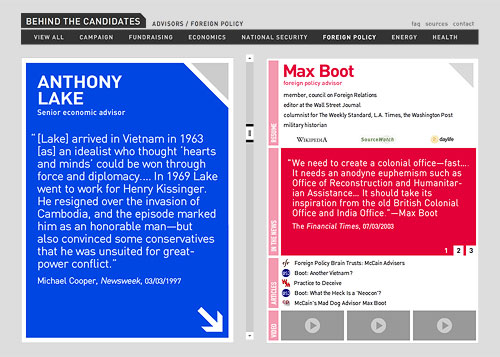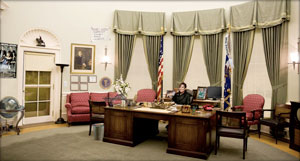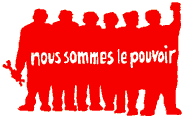October 2008


On Design Altruism
A US design student writes of her work for US AID getting out the vote in Rwanda in 2000:
“... Even something as simple as an image of a person displaying their voter registration card (as was depicted in the instructional voting poster) can have implications that an outsider would never anticipate. After election day, some people expressed strong feelings in response to this image. Apparently, the image of a person holding up their voter card recalled the ethnic identity cards used to divide Hutus and Tutsis and which were later used to target people during the genocide. People feared that the military police stationed at the voting booths might check their voter card for a stamp and look for ink on their thumb and if they were found to be without either, there could be grave consequences. When I initially learned of the reported ninety percent voter turn-out, I was thrilled. However, as I learned more about the politics of fear involved in these elections, I discovered that I might have unwittingly contributed to creating messages I did not intend. The visual is always political. It was a valuable lesson for me to learn. I just wish nobody else had to pay for it.”
Linkbox
A few collections of wonderful things:
- Political street art mostly related to the U.S. presidential election
- Anti-war stencils, a Flickr group
- Activist images and posters from around the world in the traveling Propaganda III exhibition
Little by Little

Errata
In January 2008, I published an article in Communication Arts on grassroots design initiatives effecting civic change. I wrote about the Gowanus mural commemorating the deaths of three young boys killed in traffic, and a public pledge at the mural’s unveiling by the New York City Department of Transportation to put $5 million towards improvements in downtown Brooklyn in FY08. This was August 2007, after 10 years of advocacy since the outraged community first took to the streets in 1997 over pedestrian deaths.
A year later the promised safety fixtures are nowhere to be found.
We regret the error.
Ateliers Populaires

Anti-Nazism and the Ateliers Populaires: The Memory of Nazi Collaboration in the Posters of Mai ’68 is an excellent essay on the origins and context of the Ateliers Populaires, a collective poster workshop supporting the striking students and workers in France. Among the things I learned:
- There were several Ateliers Populaires in several cities in France. Paris alone had 6.
- The posters appeared in something of a vacuum, and were all the more shocking because of this. Political posters had not been seen on the streets in 20 years.
- The first posters were originally intended as fine art prints for sale to raise money for the striking workers, not as street art, and were originally printed by offset lithography, a more labor intensive process. These were taken out to the streets by popular demand where they inspired others to do the same.
- The style and simplicity of the designs was a function of both the medium and the conditions of production: the low-tech, improvised silkscreen apparatus and the incredible speed at which they were produced.
- The cheap newsprint paper they printed on were remnants donated by newspaper printers, who couldn't use the last bits of their paper rolls.
- Anyone could submit a design or slogan and designs were argued over collectively.
- Despite the progressive politics, the role of women in the studios was rather regressive.
- In some cases, the artists chose a more provocative poster idea over a more politically sensitive one. The posters comparing the French security apparatus to the Nazis and their tactics were particularly problematic and incendiary.


